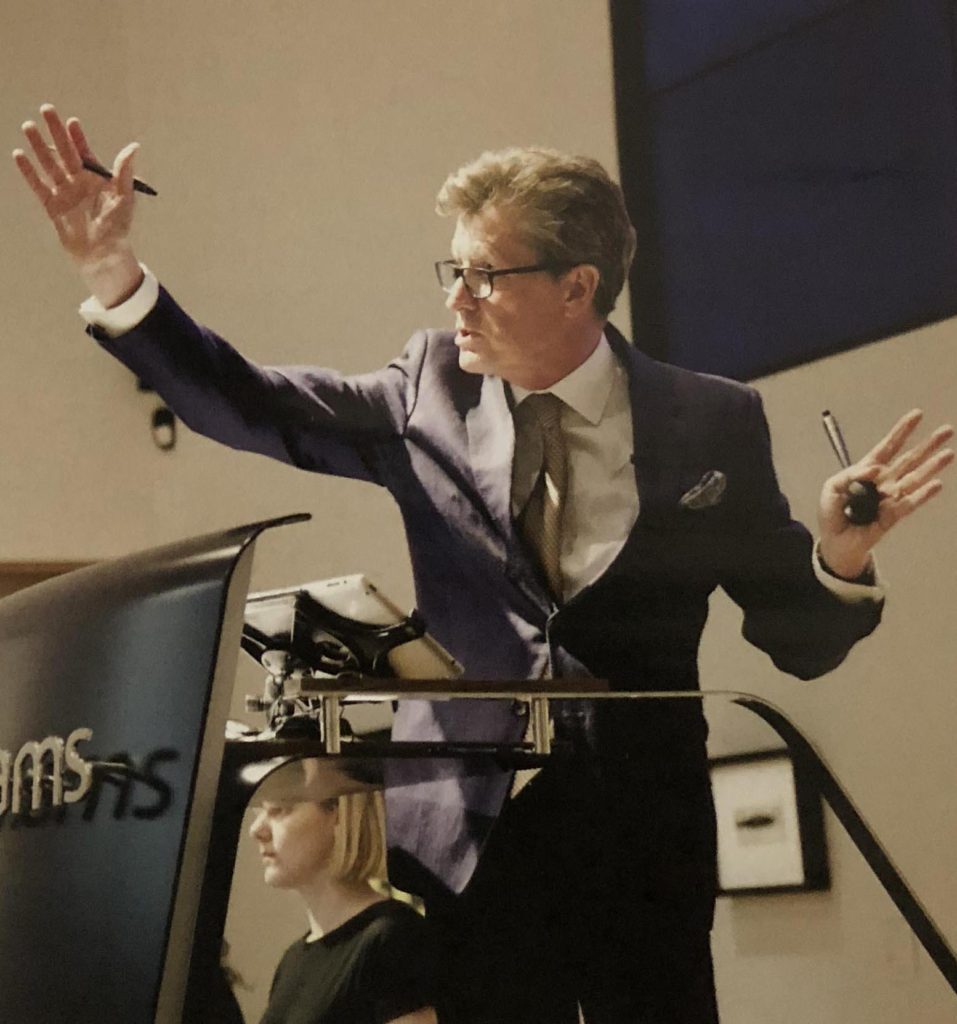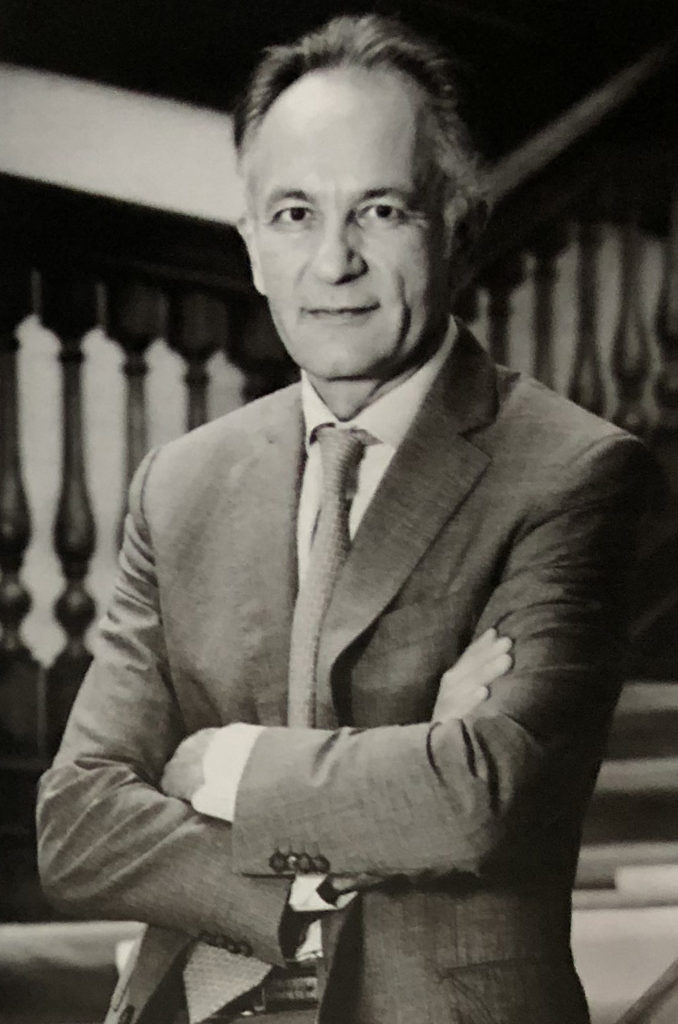
Sotheby’s had plenty to crow about, especially the record-busting $110.5 million Jean-Michel Basquiat masterpiece from 1982, Untitled, which sold to Japanese e-commerce billionaire Yusaku Maezawa and ranks as the most expensive artwork sold for any American artist
As more business is conducted in cyberspace, major auction houses are modifying their methods to meet the needs of a new generation of collectors.
The often glamorous but vaguely understood world of auctions of fine and decorative art, gems, timepieces, and classic cars topped $27 billion in global sales in 2016, according to Clare McAndrew of Dublin-based Arts Economics. The lion’s share of the lots offered—which were sold in the major art hubs of New York, London, Paris, Geneva, and Hong Kong—could be followed and bid upon online, eliminating the need to wave a paddle in a crowded salesroom. And not surprisingly, most were tendered by the four largest players in this arena.
Christie’s led the pack with auction sales of $4.4 billion, trailed by Sotheby’s at $4.25 billion, Bonhams at $622 million, and Phillips at $500 million. (Interestingly, Dallas-based Heritage Auctions—the largest house in the United States, which specializes in coins and sports memorabilia as well as fine art—chalked up auction sales totaling $850 million in 2010.) All of the houses continue to subscribe to the “three D” mantra of debt, divorce, and death to drive the flow of great and not-so-great items to auction.
A few choice and head-turning works that sold over the past year include Jean-Michel Basquiat’s fiercely tribal painting Untitled (1982)—which sold to the 41-year-old Japanese e-commerce billionaire Yusaku Maezawa for a record-shattering $110.5 million at Sotheby’s in May—and a stunning 3,000-year-old Shang-dynasty bronze ritual wine vessel from the Fujita Museum in Osaka. which sold at Christie’s New York in March for $37.2 million.
Christie’s also sold a rare-to-market 1891 Claude Monet, Meule (Gruinstack), last November in New York for a record $81.4 million, while Phillips (in association with watch experts Vacs & Russo) sold a stainless-steel Patek Philippe Ref. 1518 perpetual-calendar chronograph wristwatch with moon phase from 1943 in Geneva last November for $11.1 million—a record for any watch sold at auction. In fact, the timepiece ignited a bidding war that lasted 13 minutes, not the usual 60 seconds it takes for a single lot to sell or fail on the block. In August, at Bonhams’s Quail Lodge classic-car sale in Monterey, a silver-hued, single-owner 1905 McLaren Fl supercar with less than 10,000 miles on the odometer raced to a record $15.6 million.
Behind each of these milestone moments stands the deci-sion of a savvy collector who either saw or stumbled upon a unique opportunity. In the case of the record-setting Basquiat, for example, Jerry and Emily Spiegel—the farsighted parents of the New Yorker who sold the skull painting—acquired it in 1984 for $19,000 and kept it cloistered in their apartment until their deaths within months of each other in 2009. The prospect of such returns on investment continues to entice wealthy players to vie for trophy works in the hope of reaping huge rewards.
Robb Report sat down with four of the auction industry’s top CEOs to gather their personal perspectives on what factors are driving the market now and what steps are being taken
to attract the next generation of global collectors—especially from the wealth generating countries of Asia.

Edward Dolman
Phillips
“We are the first auction house to allow bidding from mobile phones, and we see that as the way forward. ” -Edward Dolman
We see digital space as by far the most important part of our marketing strategy, as it enables us to communicate directly to new clients in Asia, Russia, the Middle East, and South America. We have instituted a program at Phillips called Digital First, in which we are working to take advantage of digital technology in nearly every aspect of our operation.
We are the first auction house to allow bidding from mobile phones, and we see that as the way forward. We’ve already had some quite exciting results from buyers in China and the Middle East, bidding against each other on their Apple and Android phones to quite high levels in our London sales. We’re going to continue to invest heavily in that.
Gaining a foothold in Hong Kong last November with the launch of our inter-national contemporary art sales was a very important moment for Phillips. The Asian market is critical, not only to cater to our buyers on the ground in Hong Kong but also to maintain our relationships with important Chinese clients who partici-pate in our sales in London, New York, and Geneva. Every auction house now depends on bidding from Asia.
Expertise is absolutely fundamental, so we have been very aggressive in acquiring what we think are the best talents in the market, and we have a very strong team of experts right across all our categories.

Matthew Girling
Bonhams
We have found that the online space is an incredibly useful tool for younger bidders and new collectors, and we have fully embraced and invested in online and digital bidding. So far this year, 40 percent of our bids by volume have come from online bidders.
However, I do believe we need to give buyers and sellers the choice to engage with the objects or the specialists in person, if that is what they wish to do. Where major lots are concerned, it is almost unheard of for buyers—or their advisors—to buy totally sight unseen.
I’ve been investing in our teams, in taking on new specialists in our postwar and contemporary department, in our prints department, in our photographs department, and in our design department, so that we will be relevant to the collectors of the 21st century who want to do business with the auction house.
We’ve become an international company and see ourselves as fleet-footed, initiating new categories. These include our Africa Now sales of modern and contemporary African art at our New Bond Street headquarters.
Tad Smith
Sotheby’s
“We have supplemented our traditional print-based catalogues with significantly greater digital experiences, and particularly in video.”
-Tad Smith
The first thing I would say about reaching a new generation of collectors is, the way we communicate with them has been evolving very rapidly over the past couple of years through the use of social media in all varieties, by the way—whether it’s Snapchat, Instagram, Face-book, or WeChat. We’ve been dramatically invested in that.
Secondly, we have supplemented our traditional print-based catalogues with significantly greater digital experiences, and particularly in video, which is a key area for us, not just for a new and emerging generation of col-lectors but all collectors.
The third thing is that we are using far more sophisticated tools on managing relationships with customers in order to understand their needs better, and that’s crucial.
The fourth thing is that we’re definitely looking at different types of curated experiences and bringing in new and unusual events to our facilities—like the Oscar de la Renta fashion show that we hosted in New York in September—which bring new people in that we might not have potentially reached before.
We’ve also freshened up and modernized the lower couple of floors of our New York headquarters—a kind of Botox shot to make our spaces more contemporary and user friendly. All of these things are very focused and concentrated efforts to provide our collectors with a range of services, from digital to traditional.
Asia continues to be a priority for us and a crucial foundation step for developing our business. We are hosting, for example, a major exhibition in Hong Kong, The Best of the Best—The MQJ Collection of Ming Furniture, during the week of major sales there that will resonate with our Mainland Chinese clients as well as with the Taikang Insurance Group [Sotheby’s biggest shareholder].
Another crucial market for jewelry and collectibles for us is California and the West Coast. There’s an enormous amount of wealth being made there.
 Guillaume Cerutti
Guillaume Cerutti
Christie’s
“Since the beginning of 2016, about a third of our new buyers have come to us through digital sales.-Guillaume Cerutti”
Asian buyers now represent 35 percent of our buyers, and the growth there has been prodigious. Today, the Chinese and Asian buyers are collecting not only Asian art but also Impressionist. modern. and contemporary art. decorative art. and Old Master paintings. So this is a growth area for us.
The digital space. of course, is absolutely instrumental to recruiting new collectors and especially’ younger collectors, since it’s less intimidating and easier than going to a live auction or crossing the entrance of a gallery. Since the beginning of 2016, about a third of our new buyers have come to us through the digital sales. While these represent just I percent of our total sales in terms of value, it’s clearly a growing area.
But that’s not the Only thing were doing to attract new clients. Every month in New York and London, we offer Christit’s Late. a very cool and relaxed evening for our younger clients to
discover our exhibitions and sales. As you may know, auction houses have a reputation for being very serious and traditional. So. we are looking to change that Were also launching an online learning platform in English. Arabic. and Mandarin because there’s a huge appetite for education in art.